A major development in Human-Computer Interaction (HCI) driving the advent of more accessible and controllable consumer computers.
The 75 Years of Innovation series highlights the groundbreaking innovations spanning from SRI’s founding in 1946 to today. Each week, SRI will release an innovation, leading up to its 75th anniversary in November 2021.
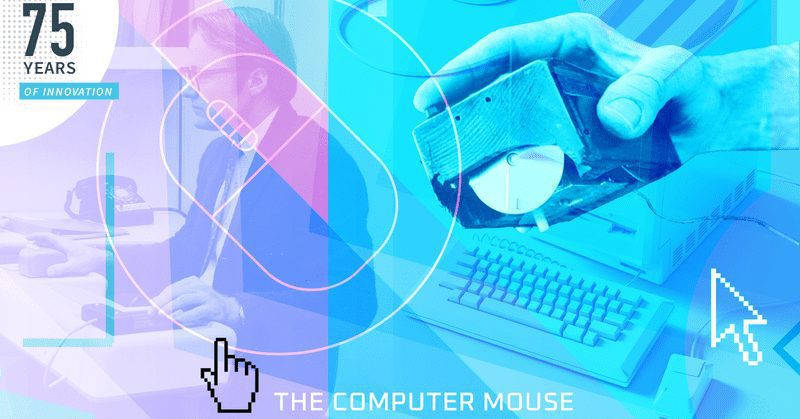
When the world heard the roar of a computer mouse
“No one can remember. It just looked like a mouse with a tail, and we all called it that.” — reply from Douglas Engelbart on being asked why a computer mouse was called a ‘mouse?’
Imagine buying a pair of sneakers online: You scroll through a list of styles, picking out your favorite, opening the page, exploring the description; you chose the color, style, size; you then add your choice to your online shopping cart; you navigate to pay, adding delivery details and so on; you then pay by card. Now imagine doing that without a computer mouse or equivalent. At the very least it would take a lot longer and perhaps even put you off using an online service.
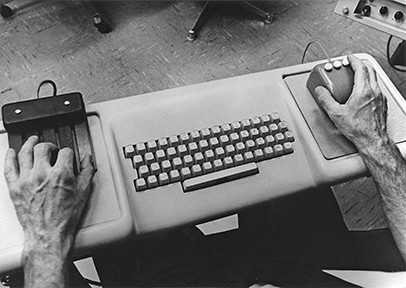
What would a website look like if it had no ‘point and click’ capability? Where you couldn’t easily scroll down a page. It’d be hard, if not impossible, for the average person to use.
One of the most important developments in the world of computing has been the way that human beings interact with computers or the discipline known as Human-Computer Interaction (HCI). The Computer Mouse, an HCI technology, aka, that little plastic oval-shaped device that fits so neatly in your hand, evolved from a development by SRI International in the 1960s.
The earliest squeaks of the first computer mouse
Back in the early years of computing, if you wanted to interact with a computer you would use a light-pen. This device was invented in 1954 and was used to point at objects on a screen; it was specifically designed to work with CRT displays. The problem was that the user had to hold the pen up in position for long periods; this was doable in the small use cases for computing in the 1950s, such as military applications, but as computers became more widespread, a new more ergonomic method became ubiquitous — The Computer Mouse.

The place of the computer mouse in the history of technology
In 1962, Douglas Engelbart published a seminal paper entitled: Augmenting Human Intellect: A Conceptual Framework. The paper discussed the hypothesis that the “intellectual effectiveness of a human can be significantly improved by an engineering-like approach toward redesigning changeable components of a system.” Engelbart points out in the paper:
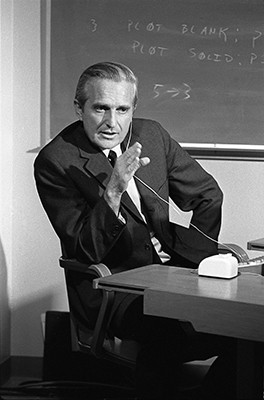
“By “augmenting human intellect” we mean increasing the capability of a man to approach a complex problem situation, to gain comprehension to suit his particular needs, and to derive solutions to problems…”
”We refer to a way of life in an integrated domain where hunches, cut-and-try, intangibles, and the human “feel for a situation” usefully co-exist with powerful concepts, streamlined terminology and notation, sophisticated methods, and high-powered electronic aids.”
As part of the research into augmenting human intellect, Doug Engelbart and his team came up with an idea called, ‘The Mouse’; this was one of several devices, including headgear, that allowed the human body to input data into a computer, or in other words HCI technologies. Allegedly, the initial idea for the mouse was described during a conference talk in 1961, but the work to deliver the first mouse as a human-computer interface (HCI) didn’t start in earnest until 1962.
The early designs of the mouse used two sets of rolling wheels, perpendicular to one another. In 1964, Bill English, a member of the original SRI International ‘Mouse Team’, built the prototype of The Mouse, as designed by Engelbart; this mouse used two sets of knife-edge wheels with a single press button.
And so, a computer mouse was born…
The patent for The Mouse was filed on June 21, 1967, and granted January 17, 1970.
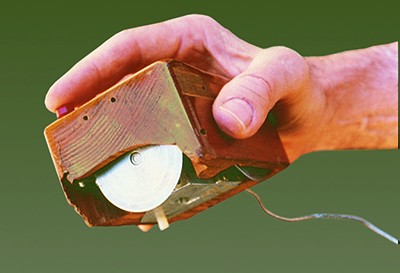
In 1972, Bill English, now working for Xerox PARC, replaced the wheels with a ball to create the ‘Ball Mouse’. The ball, in combination with rollers and internalized wheels, was able to utilize electrical pulses to represent direction and speed. In the early 1980s, an optical mouse was designed to replace the ball mouse, the ball tended to get dirty in use, which affected its performance.
How a humble computer mouse raised the roof of consumer computing
In 1968, at the Fall Joint Computer Conference, the Computer Mouse made its debut. It entered a world ready to take its lead as the HCI technology extraordinaire. Engelbart was a visionary. He saw a world where human evolution tracked technological advances and vice versa — the two intrinsically linked and working in synchronicity.
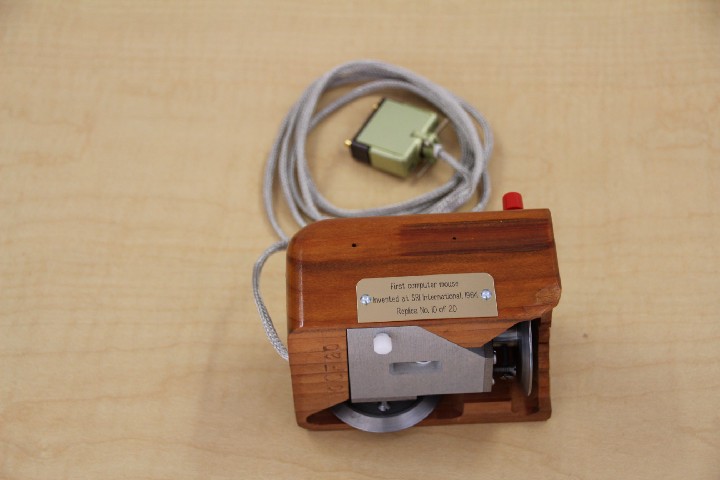
The Mouse allowed human beings to connect thoughts and ideas with a computer in a way that was highly intuitive. But the humble Computer Mouse also had a major impact on the design of the computer interface. The Graphical User Interface (GUI) that we are all use today, was part of a revolution in how human beings interact with computers. These were evolutionary first steps on the road to modern touch screens. Without the development of an ergonomic, naturalistic, and engaging technology, computers may have taken a very different path indeed.
To this end, the world of computers, especially those used en masse by the general public, owe much to the smallest of computer peripherals, the Computer Mouse.
Visionary Douglas Engelbart passed away on July 2, 2013. View his obituary from SRI and the New York Times. Douglas was 88.
Computing pioneer William (Bill) English passed away on July 26, 2020. View his obituary from the New York Times. Bill was 91.

Resources
The Light Pen: https://www.computerhope.com/jargon/l/lightpen.htm
Augmenting Human Intellect: A Conceptual Framework, By Douglas C. Engelbart, October 1962: https://www.dougengelbart.org/content/view/138/#5
1968 demonstration at Menlo Park, California, by Douglas Engelbart of a mouse in action: https://www.computerhistory.org/revolution/input-output/14/350/2302
Douglas Engelbart Mouse patent drawings: https://www.computerhistory.org/revolution/input-output/14/350/1877
Original patent for the mouse, “X,Y indicator for a display system”: https://patents.google.com/patent/US3541541A/en
Bill English and the Ball Mouse: http://www.computinghistory.org.uk/det/720/bill-english/


